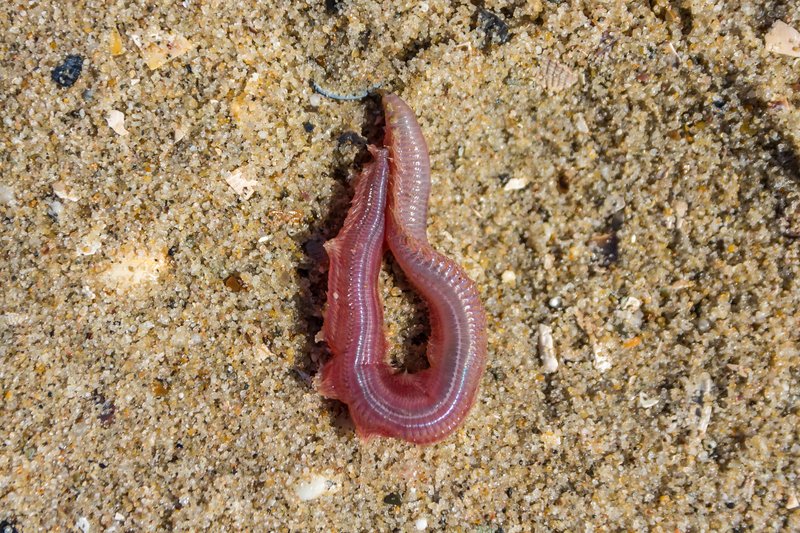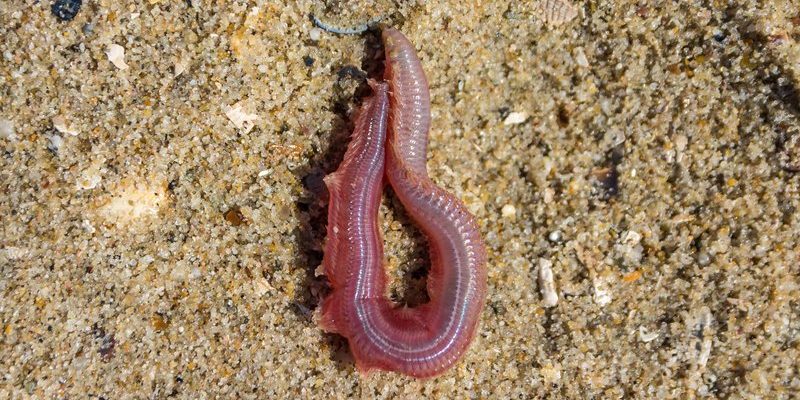
So, what exactly qualifies as a bloodworm? Essentially, bloodworms are the larvae of certain types of midge flies. They live in wetland areas, like marshes, swamps, or shallow ponds, where they thrive in sediment. Their vibrant red hue comes from hemoglobin, the same protein that makes our blood red. Think of it as their way of adapting to their environment—this hemoglobin allows them to survive even in low-oxygen conditions. Let’s dive deeper into the world of bloodworms and uncover why these slimy little creatures are so important.
What Makes Bloodworms Unique?
You might be wondering why bloodworms have gained such a reputation. Beyond their eye-catching color, they are quite unique in the animal kingdom. One of their standout features is their hemoglobin content, which helps them transport oxygen effectively. Unlike most other worms that use a simpler means of oxygen transport, bloodworms can tolerate environments that would suffocate many other creatures.
This adaptability is crucial. Bloodworms often live in places with poor water circulation, like ponds that don’t get much fresh water. Here’s the thing: while these areas might be tough for many critters, bloodworms thrive. They spend their larval stage in these nutrient-rich habitats, feasting on decomposing organic material. Think of them as nature’s little recyclers, breaking down and transforming waste into energy for their survival.
Where Do Bloodworms Live?
Bloodworms are commonly found in diverse habitats, particularly in freshwater environments. They usually prefer shallow waters, where they can burrow into the sediment. You can spot them hanging out in:
- Ponds
- Marshes
- Lakes
- Shallow streams
- Swamps
These habitats are packed with nutrients, which provide the perfect environment for bloodworms to grow and thrive. It’s interesting to note that they’re not just limited to rural areas; you might even find them in urban settings where there are small ponds or stormwater retention basins.
With their ability to adapt to various conditions, bloodworms can also tolerate polluted waters better than many other species. This resilience makes them a key indicator of ecosystem health. So, if you find a bunch of bloodworms in a pond, it’s a good sign that the environment has some balance!
The Life Cycle of a Bloodworm
Bloodworms, like many insects, have a fascinating life cycle. It begins when a female midge fly lays her eggs in wet sediment or floating vegetation. Once the eggs hatch, the tiny larvae emerge and start their journey as bloodworms.
During their larval stage, they can live for several weeks or even months, depending on environmental conditions. Here’s how it works step-by-step:
1. Egg Stage: The female midge lays up to 300 eggs at a time.
2. Larval Stage: After a few days, the eggs hatch into bloodworm larvae.
3. Pupal Stage: Eventually, they enter a pupal stage, where they undergo metamorphosis.
4. Adult Stage: Finally, they emerge as adult midge flies, completing their life cycle.
It’s pretty amazing when you think about it! Despite their short life span as larvae, bloodworms play a crucial role in their ecosystems. They help with nutrient cycling, making the environment more hospitable for other species.
Why Are Bloodworms Important?
Bloodworms might seem small and insignificant, but they serve important functions in their ecosystems. As I mentioned earlier, they assist with nutrient cycling, breaking down organic matter, and enriching the sediment. This helps create a healthier habitat for fish and other aquatic life. In fact, many fish breeders often use bloodworms as a food source for younger fish, providing high protein and nutrients.
Also, bloodworms are pretty crucial in the food web. They serve as food for various creatures, including fish, birds, and even larger insects. Without them, many resident species would face food shortages, affecting the overall ecosystem.
On a larger scale, scientists study bloodworms to understand how environmental changes impact aquatic ecosystems. With climate change and urban development affecting habitats, these little guys can offer insights into the resilience and adaptability of life in water.
Using Bloodworms in Fishing
If you’re an angler, you probably know that bloodworms make excellent bait. Their vibrant color and movement are hard for fish to resist. Many fishermen use them when targeting species like striped bass, flounder, or bluefish. Here’s why bloodworms are a popular choice:
– Natural Source of Protein: Fish are attracted to bloodworms due to their rich nutritional content.
– Effective Movement: The way they wiggle and squirm mimics the movement of a struggling prey, making them irresistible.
– Long-Lasting: Bloodworms can stay alive longer than many other baits, giving you more time to snag that big catch.
When fishing with bloodworms, it’s essential to keep them cool and moist. You wouldn’t want them to dry out before they reach the water! Many anglers store them in a cooler or a wet cloth to keep them fresh.
Common Misconceptions About Bloodworms
Like many unique creatures, bloodworms come with their share of myths and misconceptions. One common belief is that bloodworms are harmful or toxic. In reality, while they do have a striking appearance, they are generally harmless to humans. They don’t bite, and touching them won’t cause you any harm.
Another misconception is that all bloodworms are the same. In fact, there are different species of bloodworms, and they vary in size, color, and habitat preferences. While most people think of the bright red ones used for fishing, others might be less colorful and live in different environments.
Lastly, some folks believe that bloodworms are just a nuisance in fishing areas. However, they provide significant benefits to ecosystems and play a vital role in maintaining biodiversity. Instead of seeing them as unwanted pests, consider them essential players in nature’s grand design.
So, what have we learned about bloodworms? They’re not just slimy creatures wriggling in the mud; they’re remarkable little larvae that contribute to their ecosystems in numerous ways. From their unique adaptations to their role in nutrient cycling, bloodworms are vital to both aquatic habitats and fishing communities.
Next time you stumble upon a bloodworm, take a moment to appreciate its role as a nature’s recycler and a fish’s favorite snack. Whether you’re interested in nature, fishing, or just curious about the world around you, understanding bloodworms gives us a glimpse into the intricate web of life beneath the surface of the water. They truly are nature’s unsung heroes!

